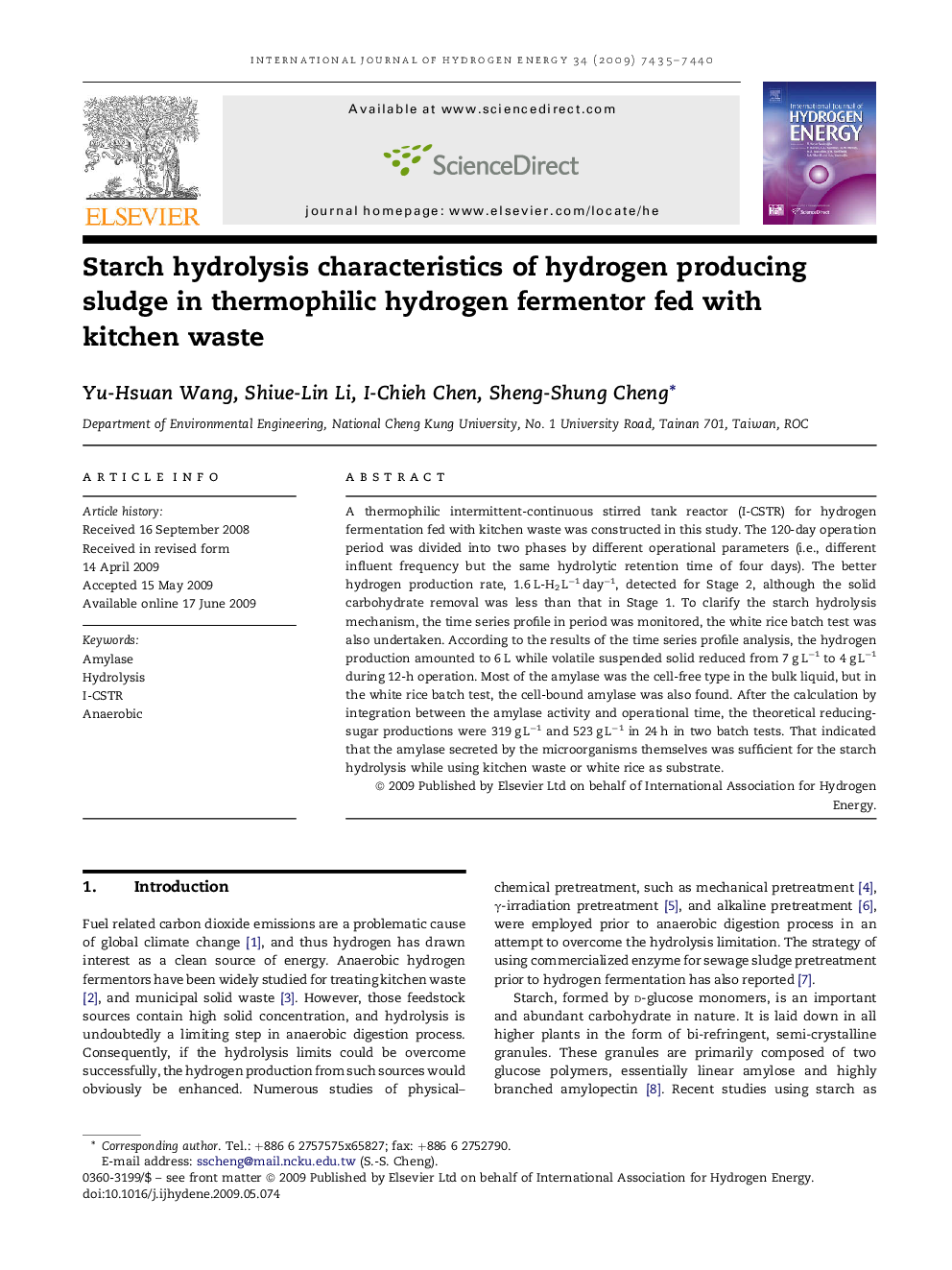| Article ID | Journal | Published Year | Pages | File Type |
|---|---|---|---|---|
| 1281133 | International Journal of Hydrogen Energy | 2009 | 6 Pages |
A thermophilic intermittent-continuous stirred tank reactor (I-CSTR) for hydrogen fermentation fed with kitchen waste was constructed in this study. The 120-day operation period was divided into two phases by different operational parameters (i.e., different influent frequency but the same hydrolytic retention time of four days). The better hydrogen production rate, 1.6 L-H2 L−1 day−1, detected for Stage 2, although the solid carbohydrate removal was less than that in Stage 1. To clarify the starch hydrolysis mechanism, the time series profile in period was monitored, the white rice batch test was also undertaken. According to the results of the time series profile analysis, the hydrogen production amounted to 6 L while volatile suspended solid reduced from 7 g L−1 to 4 g L−1 during 12-h operation. Most of the amylase was the cell-free type in the bulk liquid, but in the white rice batch test, the cell-bound amylase was also found. After the calculation by integration between the amylase activity and operational time, the theoretical reducing-sugar productions were 319 g L−1 and 523 g L−1 in 24 h in two batch tests. That indicated that the amylase secreted by the microorganisms themselves was sufficient for the starch hydrolysis while using kitchen waste or white rice as substrate.
